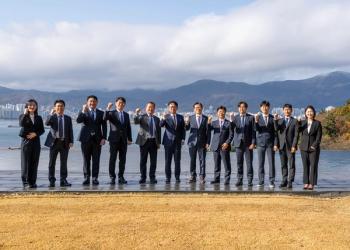
GE Vernova, Systems with Intelligence to Develop Substation Monitoring Solutions
Systems with Intelligence (SWI) will integrate its fixed infrared sensors with GE Vernova’s DGA 900 Plus—an early-detection gas transformer monitoring system.
GE Vernova and SWI signed a memorandum of understanding (MoU) to develop advanced substation monitoring solutions—the collaboration will integrate technologies such as gas sensing, busing monitoring, infrared thermography, artificial intelligence (AI), and machine learning (ML). The partnership’s goal is to improve grid asset management by combining SWI’s infrared thermography and touchless monitoring systems with GE Vernova’s Grid Automation solutions.
"Today’s asset managers are flooded with data from a myriad of sensing devices provided by various vendors,” said Graham McGuigan, Product Line Leader for Monitoring & Diagnostics at GE Vernova. “This often leads to fragmented data silos, requiring multiple software tools to manage and analyze the data independently. Our collaboration with SWI is a step towards unifying these data streams into a more cohesive and intelligent monitoring system."
Initially, SWI will integrate its fixed infrared sensors into GE Vernova’s DGA 900 Plus—a gas transformer monitoring system that detects early signs of issues to prevent transformer failures. This solution, to be commercially available in early 2025, will allow asset managers to combine infrared thermography with the DGA 900 Plus platform, which already includes dissolved gas analysis, bushing monitoring, and predictive monitoring capabilities.
"By combining different sensing techniques, we can create solutions that offer enhanced diagnostic intelligence while simplifying the user experience,” said Angelo Rizzo, President and CEO of SWI. “This collaboration is a significant move towards achieving that goal."
Advanced substation monitoring will converge monitoring and diagnostic intelligence to enhance asset management capabilities. The collaboration may streamline monitoring for utilities and transmission system operators, enabling proactive issue detection for a reliable, efficient, and stable power grid. GE Vernova and SWI plan to expand collaboration to include the integration of pan/tilt substation-level infrared sensors within the GridBeats Asset Vision substation monitoring solution.
GE Vernova’s Grid Portfolio
In February 2024,
The software enhances grid resilience and reliability with faster controls, AI/ML-based automation, and improved cybersecurity. GridBeats improves visibility across the grid, from larger areas to specific equipment, due to precise sensors and dependable communication networks. Software-defined automation allows for greater flexibility, boosted performance, and a sped-up shift toward sustainable energy.
In May,
GE Vernova pre-seeded the startup with an early-stage investment, with an additional $5 million seed-stage investment from Powerhouse Ventures and Active Impact Investments. Other investors in the startup include Blackhorn Ventures, Amplify Capital, Mercuria Energy, and a national U.S. energy company. ThinkLabs AI will be privately owned by GE Vernova and the additional investors.
Newsletter
Power your knowledge with the latest in turbine technology, engineering advances, and energy solutions—subscribe to Turbomachinery International today.





